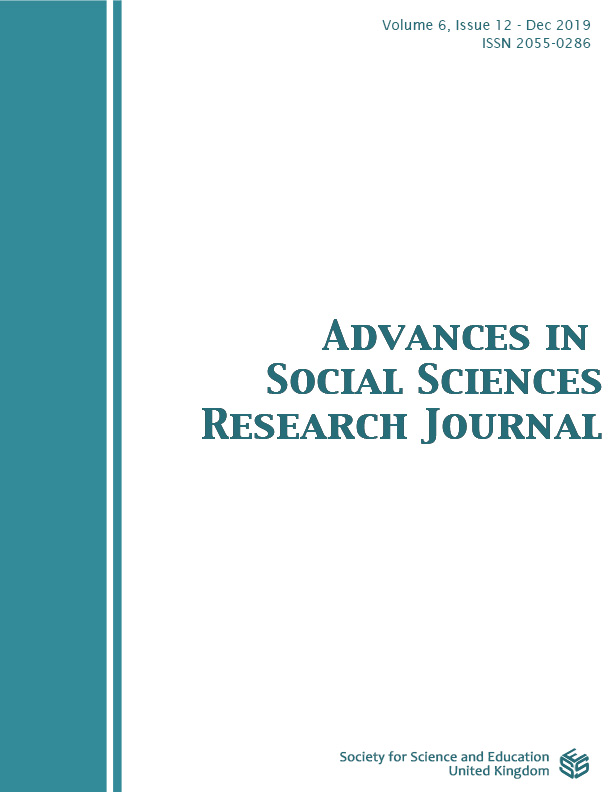ORGANIZATIONAL COMMUNICATION MODEL IN REGIONAL GOVERNMENT OF SIDOARJO DISTRICT IN MAKING LOCAL REGOLATION
DOI:
https://doi.org/10.14738/assrj.612.7475Keywords:
Organizational Communication, District Government, Regional RegulationAbstract
The main key to the implementation of Regional Government (Pemda) in the making of local regulations (Perda) is the well-established organizational communication among the management of the management, so that it can equalize perceptions to support and accelerate development programs in the region. With harmonious organizational communication can be avoided slow process, long-winded, so that it is not efficient which results in the direction of regional development to be inconsistent (Sadu Wasistiono, 2010: 42). For this reason, local government managers should have a partnership and equal relationship. This partnership relationship is important in the process of making a Perda.
This study uses a qualitative approach that is focused on identifying the dominant factors that can facilitate the communication of local government organizations in the process of making Perda. Data collection techniques use purposive methods and domain analysis. Thus, this research is expected to be studied in a normative, sociological manner that is comprehensive and holistic. This study resulted in the finding of 4 (four) dominant factors in organizational communication in the Sidoarjo Regency Government which became a catalyst in the implementation of local democracy, namely facilities, budget support, staff competence, and good relations with mass media. Through classifying the flow of communication based on the domain that has been established, the research team can finally build a communication model of the Sidoarjo Regency Government organization in the process of making the Perda.
The main key to the implementation of Regional Government (Pemda) in the making of local regulations (Perda) is the well-established organizational communication among the management of the management, so that it can equalize perceptions to support and accelerate development programs in the region. With harmonious organizational communication can be avoided slow process, long-winded, so that it is not efficient which results in the direction of regional development to be inconsistent (Sadu Wasistiono, 2010: 42). For this reason, local government managers should have a partnership and equal relationship. This partnership relationship is important in the process of making a Perda.
This study uses a qualitative approach that is focused on identifying the dominant factors that can facilitate the communication of local government organizations in the process of making Perda. Data collection techniques use purposive methods and domain analysis. Thus, this research is expected to be studied in a normative, sociological manner that is comprehensive and holistic. This study resulted in the finding of 4 (four) dominant factors in organizational communication in the Sidoarjo Regency Government which became a catalyst in the implementation of local democracy, namely facilities, budget support, staff competence, and good relations with mass media. Through classifying the flow of communication based on the domain that has been established, the research team can finally build a communication model of the Sidoarjo Regency Government organization in the process of making the Perda.
References
Arni Muhammad, 2002, Organizational Communication, Jakarta: Bumi Aksara.
Buduardjo,Miriam, 2008, The Basics of Political Science, 2008, Jakarta: Gramedia Pustaka Utama.
Deden Faturohman, “Local Democracy in the Selection of Direct Regional Heads in Indonesia”, Jurnal Legality, Vol 12, Nomor 1, 2005.
Irtanto, 2008, Local Political Dynamics Era of Regional Autonomy, Yogyakarta: Pustaka Pelajar.
Ivancevich, John M., Robert Konopaske, Michael T. Matteson, 2006, Organizational Behavior and Management, Jakarta:Penerbit Erlangga.
Marbun, BN., 2004, DPRD and Regional Autonomy After the 1945 Constitution Amendment and the 2004 Regional Autonomy Law, Jakarta: Surya Multi Grafika.
R.Wayne Pace & Don F Faules, 2006, Organizational Communication Strategies to Improve Company Performance,Bandung: Remaja Rosdakarya.
Robbins, Stephen P., 1999, the fifth edition of organizational behavior principles, Jakarta:Penerbit Erlangga.
Sadu Wasistiono, 2010, Towards Balanced Decentralization, Journal of Political Science: Entering the Second Decade of Autonomy in the Evaluation and Prospect Areas, Issue 21, Yogyakarta: AIPI-Pustaka Pelajar.
Saputra, Yulius Eka Agung., 2014, Management and Organizational Behavior, Jogjakarta: Graha Ilmu.
Sugiyono, 2005, Understanding Qualitative Research Equipped with Sample Proposals and Research Reports, Bandung : Alfabeta.
Law No. 32 of 2004 concerning Regional Government, Jakarta: Raja Grafindo Persada.
Act No.1 of 2015, concerning the Establishment of Government Regulation in Lieu of Law No.1 of 2014 concerning the Election of Governors, Bupati and Walikota.
Downloads
Published
How to Cite
Issue
Section
License
Authors wishing to include figures, tables, or text passages that have already been published elsewhere are required to obtain permission from the copyright owner(s) for both the print and online format and to include evidence that such permission has been granted when submitting their papers. Any material received without such evidence will be assumed to originate from the authors.






